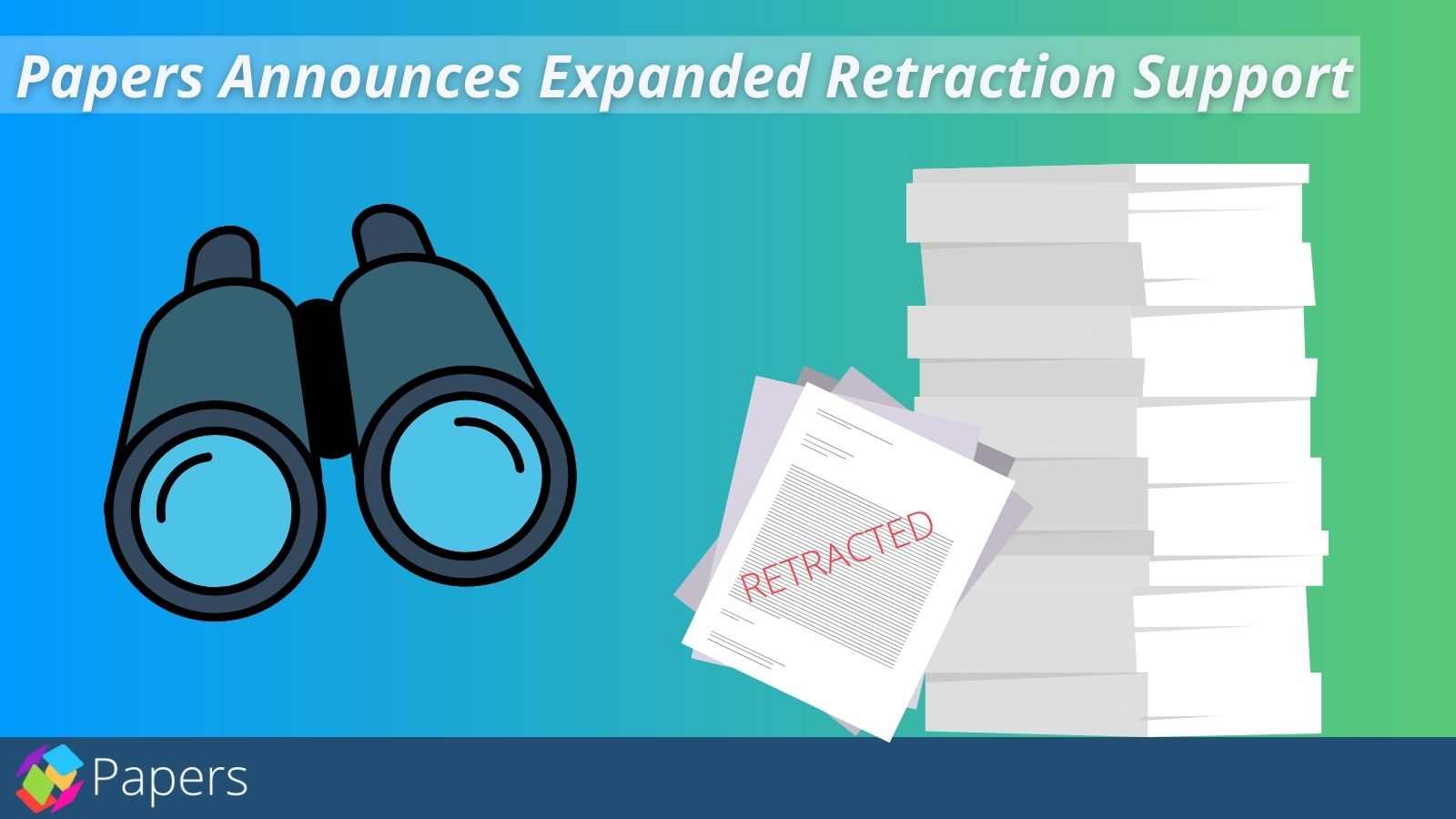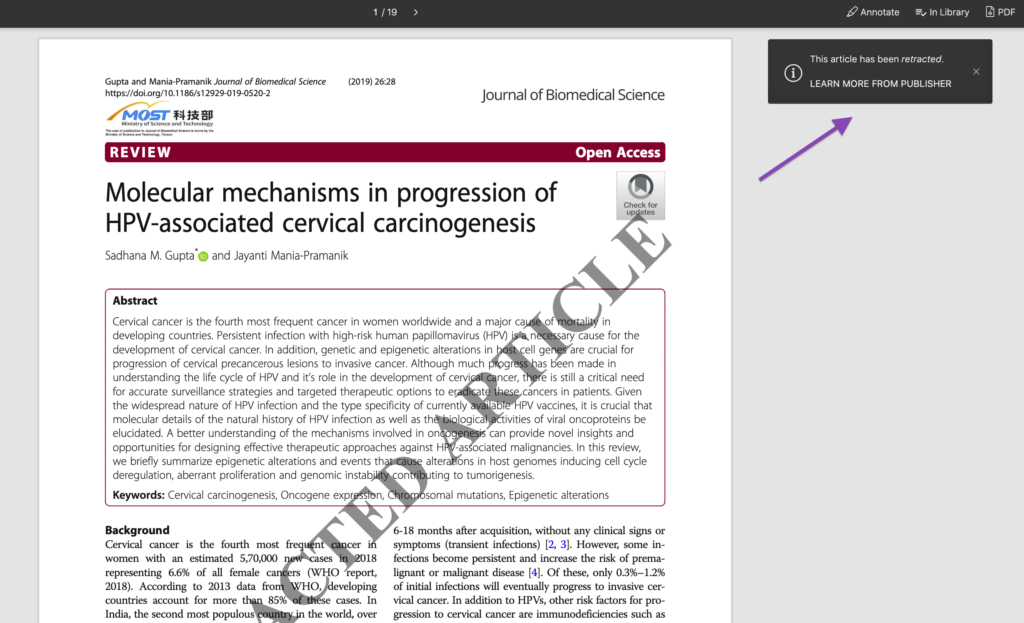Expanded Retraction Support is Here

We’ve further expanded the breadth of our article retraction alerting capabilities within the Papers platform. With the integration of the Retraction Watch database, Papers users are enjoying expanded coverage to the current retraction data already available within Papers. Users also now have access to even more retraction-related features within the application, including complete retraction notices, as well as alerts when attempting to cite a paper that was retracted.
Since 2010, Retraction Watch has tracked retraction activity across publishers, promoting transparency and integrity in science and scientific publishing. The Retraction Watch’s curated database includes over 30,000 items and is known for its robust coverage and accuracy.
What is a journal retraction?
A journal retraction is a journal’s statement that a previously published study should no longer be a part of ongoing scientific inquiry because the data is flawed or the study was done in an unethical manner, meaning there are issues with things like informed consent or plagiarism.
Flawed publications undermine the integrity of science and lead to the propagation of erroneous data to other genuine publications. That’s why we need the retraction of this work—to preserve the integrity of the entire scientific research ecosystem.
It’s important to note that not every retracted article means that something nefarious happened. While many articles are retracted for scientific misconduct or fraud, others are retracted by the authors themselves because they realize after publication that they made an honest error. Other articles are retracted because the authors may have simply misworded their findings. In these cases, the article is immediately republished with a wording or paragraph change.
A retraction can be reported in several ways—by a keen reader, a peer reviewer, the authors themselves, a learned society, or the publisher. In most cases, the concerns are brought to the journal editor’s attention and an investigation begins. Unfortunately, this is rarely a fast process. The average time from original publication to retraction is 3.5 years. So, by the time a reader is aware of a retraction, the data has continued to be disseminated.
Connecting the dots on retraction data
While retraction data historically is listed on publisher websites, for most researchers, once a paper is downloaded locally or into a reference manager, returning to the publisher page to continuously check for article updates is not a standard workflow. This disconnect can lead to the accidental use of retracted research and contribute to the issue of recitation, where the research continues to be cited even after it’s been retracted.
Recitation can impact an author’s credibility and negatively impact the scientific community because it extends erroneous data. If a health professional uses incorrect information to treat a patient, they are putting that patient’s health at risk. By automatically flagging retracted literature within Papers, we hope to eliminate the burden for our users. Because they don’t have to rely on manual workflows to track these important status changes, they’ll see a dramatic reduction in recitation and the use of retracted material in one’s research work.
What’s next at Papers?
At Papers, we spend a lot of time thinking about how we can better connect your libraries to related research data. Today, users benefit from dynamic citation metrics, auto-fetched supplemental data, auto-populated article metadata, interactive reading environments, seamless full-text access options, and now, retractions. We’d love to hear from you about what data you’d like to see connected next!
